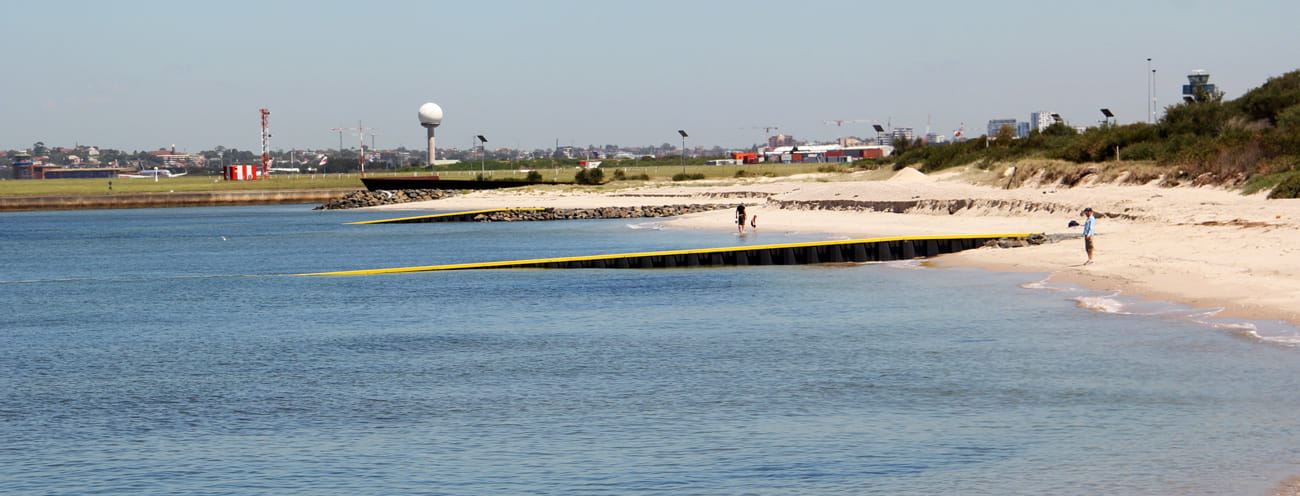As part of the Port Botany expansion project in Sydney, Australia, restoration and beautification works were carried out on Foreshore Road Beach.
The situation
As part of the Port Botany expansion project in Sydney, Australia, restoration and beautification works were carried out on Foreshore Road Beach. At the conclusion of the project, significant erosion of the beach sand became apparent; far greater than predicted. Compounding this, sand moving along the beach blocked stormwater drainage pipes, which caused localised flooding in some of the streets in Botany. The client, Port Authority of New South Wales, engaged Advisian to investigate these issues and to design works that would ameliorate the beach erosion processes and prevent blockage of the storm water outlets.
Our approach
After a desk top study, Advisian recommended works in the form of a groyne field and sand nourishment. Two rock armoured groynes, within which the storm water pipes would be enclosed, were designed to extend the outlets farther into Botany Bay. An additional groyne was included between the pipes to stabilise the beach further.
The groynes were novel in that they extended far offshore underwater, which helped to compartmentalise the beach, dissipating the action caused by rips. This is because groynes that extend above the level of the water can cause beach sand to be taken offshore, reducing the amount of sand available on the beach.
A further novel aspect of the design was that the groynes were constructed of fibre-reinforced plastic sheet piling, which allowed for their installation below the water level. Normal rock groynes must be constructed to elevations above the high water level, which then causes the rip action.
The fibre-reinforced plastic was chosen over steel due to its comparative lighter weight and, therefore, easier handling, as well as its non-corrosive properties in the salt water environment. For detailed design, Advisian undertook mobile bed physical scale modelling to determine the beach shapes that would develop between the new groyne structures.
The results
The previous beach restoration design was based purely on computer modelling. Advisian identified that the rock fill groyne structure of the previous design was not being effective in holding sand on the beach and suggested alternative structures. Understanding that our solution would need to improve the situation significantly, Advisian proposed mobile bed scale modelling of the entire beach domain to test the concept designs.



